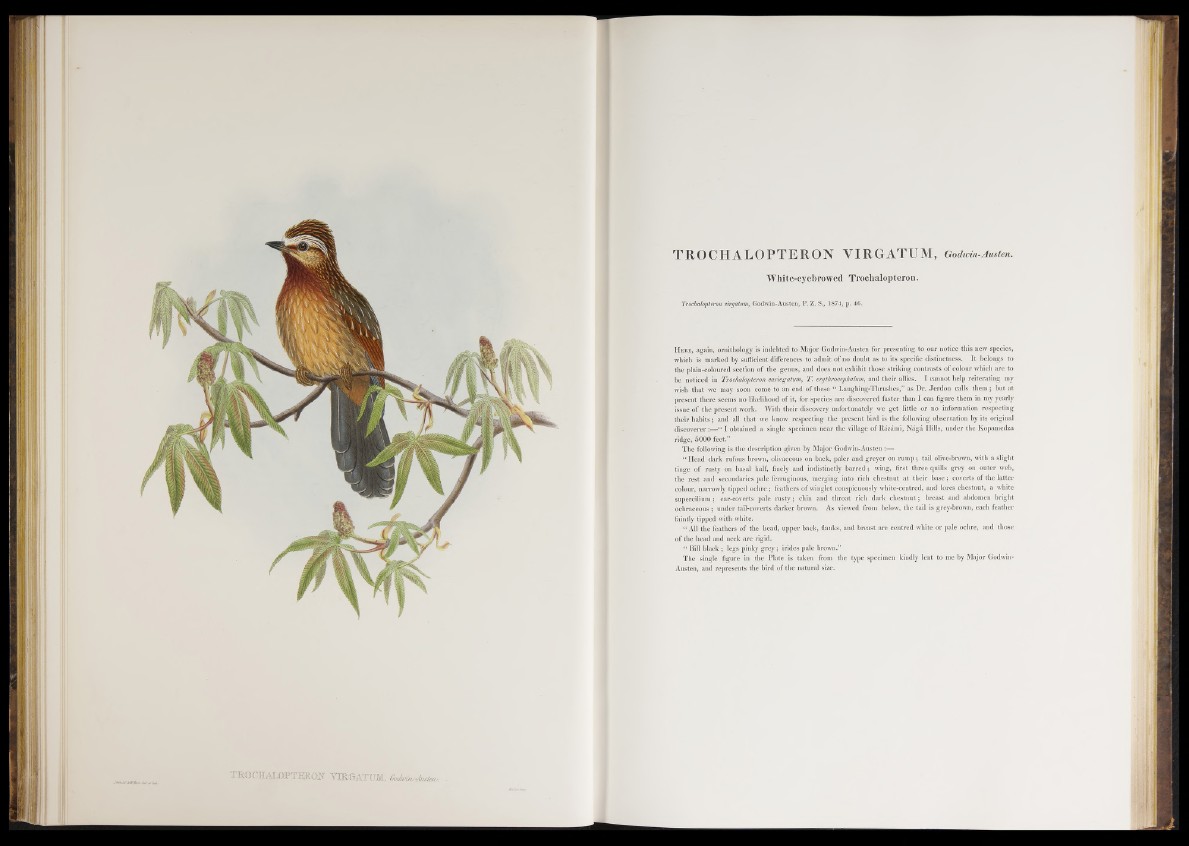
Jfou&b ht/v. XKQCHAMPTEKOIT VmGATUM, (m fains-Jkstw s.
TROCHALOPTERON VIRGATUM, Godwin-Austen.
White-eyebrowed Trochalopteron.
Trochalopteron virgaium, Godwin-Austen, P. Z. S., 1874, p. 46.
H e r e , again, ornithology is indebted to Major Godwin-Austen for presenting to our notice this new species,
which is marked by sufficient differences to admit o f no doubt as to its specific distinctness. I t belongs to
the plain-coloured section of the genus, and does not exhibit those striking contrasts of colour which are to
be noticed in Trochalopteron variegatum, T. erythrocephalum, and their allies. I cannot help reiterating my
wish that we may soon come to an end o f these “ Laughing-Thrushes,” as Dr. Jerdon calls them; but at
present there seems no likelihood of it, for species are discovered faster than I can figure them in my yearly
issue o f the present work. With their discovery unfortunately we get little or no information respecting
their h ab its; and all that we know respecting the present bird is the following observation by its original
discoverer:—“ I obtained a single specimen near the village of Razami, Naga Hills, under the Kopamedza
ridge, 5000 feet.”
The following is the description given by Major Godwin-Austen :—
“ Head dark rufous brown, olivaceous on back, paler and greyer on rump ; tail olive-brown, with a slight
tinge of rusty on basal half, finely and indistinctly b a rre d ; wing, first three quills grey on outer web,
the rest and secondaries pale ferruginous, merging into rich chestnut a t their base; coverts of the latter
colour, narrowly tipped ochre; feathers o f winglet conspicuously white-centred, and lores chestnut* a white
supercilium; ear-coverts pale ru sty ; chin and throat rich dark chestnut; breast and abdomen bright
ochraceous ; under tail-coverts darker brown. As viewed from below, the tail is grey-brown, each feather
faintly tipped with white.
“ All the feathers o f the head, upper back, flanks, and breast are centred white or pale ochre, and those
of the head and neck are rigid.
“ Bill black ; legs pinky g rey ; irides pale brown.”
The single figure in the Plate is taken from the type specimen kindly lent to me by Major Godwin-
Austen, and represents the bird o f the natural size.